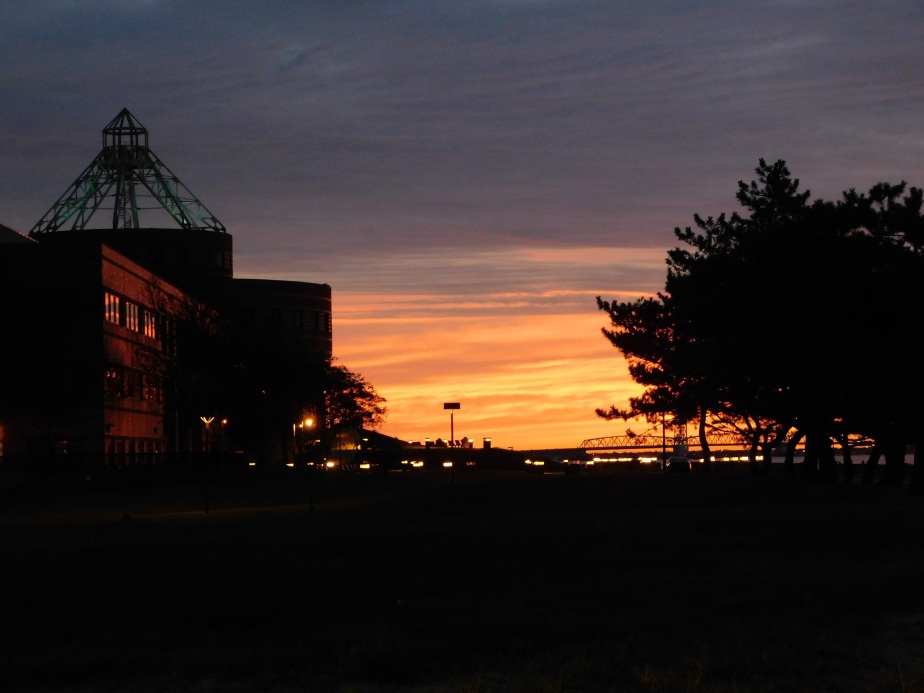
“Manhattan is like Beverly Hills. And the soul of New York has moved to Brooklyn, where everything new and exciting seems to be.”
Alec Baldwin


“Manhattan is like Beverly Hills. And the soul of New York has moved to Brooklyn, where everything new and exciting seems to be.”
Alec Baldwin
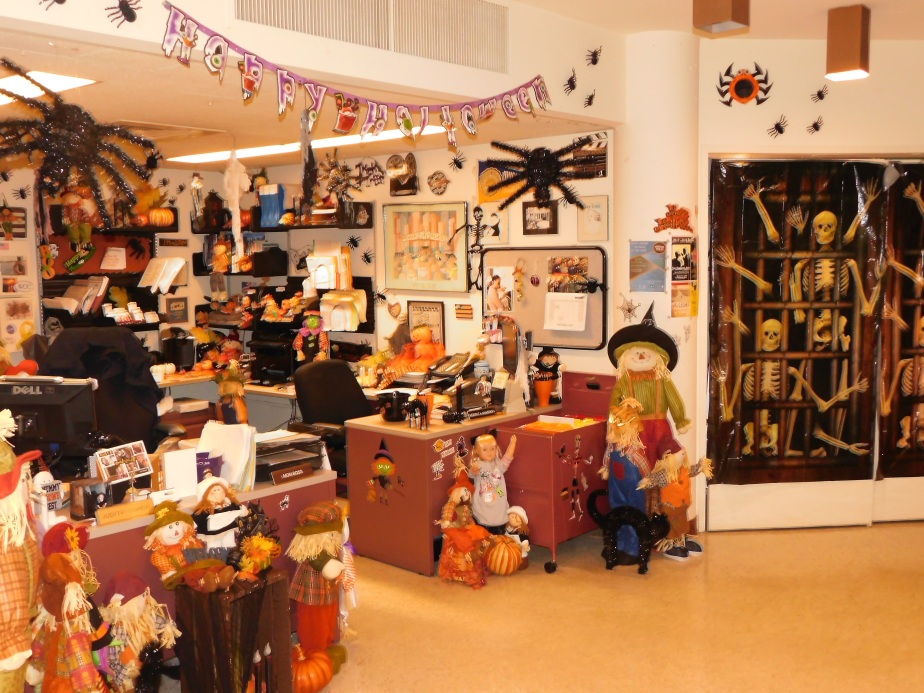
Judith Cohen, one of the cornerstones of the great Department of Communications and Performing Arts at Kingsborough loves KCC it’s students, it’s staff and it’s faculty but most of all she loves celebrating the many holidays of the year with them and she does it in a spectacular way.
Judy who is a fixture volunteering at many if not most of the KCC college-wide events from Homecoming to Seaside Splash, creates her own spectacular events on the third floor of the Clusters at Kingsborough each and every season of the year.
“I look forward to each holiday to come up with ideas for decorating, as I never know what I am going to do. It makes the office bright and cheerful”
The Office of Communications and Performing Arts which is responsible for many of the wonderful programs, plays and events produced at the college each year by it’s students and faculty at the MAC Playhouse- including the cannot miss ,upcoming production of Lillian Hellman’s , the “Childrens Hour,” has it’s own in-house set designer in Judy Cohen.
“I enjoy when students come in to ask when they see me decorating if they can come back when I am finished. The department faculty and staff as well as other departments enjoy seeing what I add/change each year.”

To walk into the main office of the Communications and Performing Arts on any given holiday might make one feel like the way Alice felt falling down into the hole in Lewis Caroll’s Wonderland.
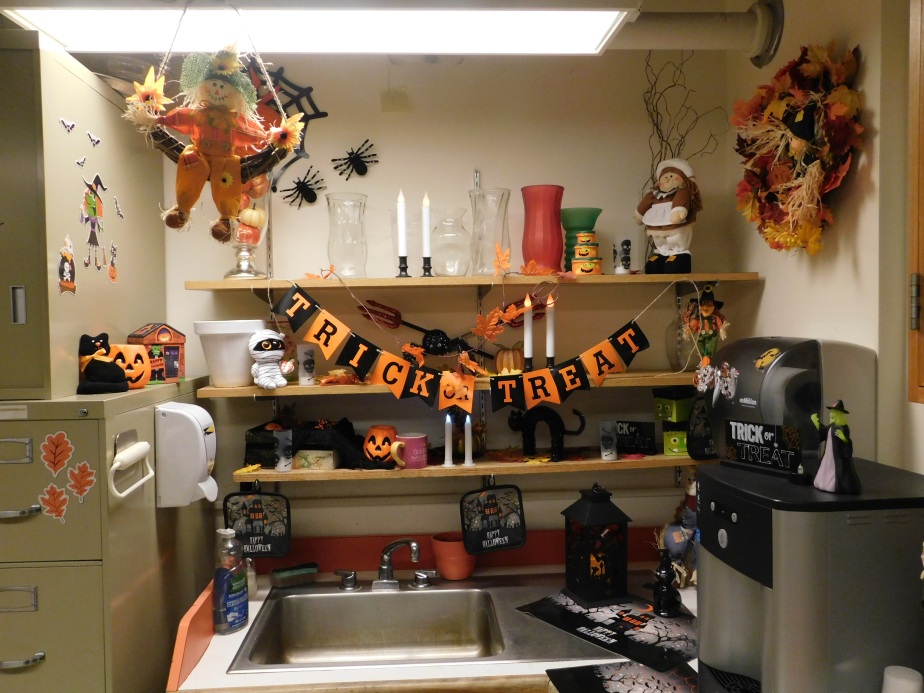
Judy creates her own world of celebration and joy and invites you in to celebrate with her.
While many other offices at KCC also put up magnificent decorations during the holiday seasons- Judy takes it to another level. She makes her office appear almost like the Brooklyn neighborhood of Dyker Heights does during the Christmas season, with magnificent lights, over the top decorations and a spirit of happiness that becomes contagious the moment you walk into her office.
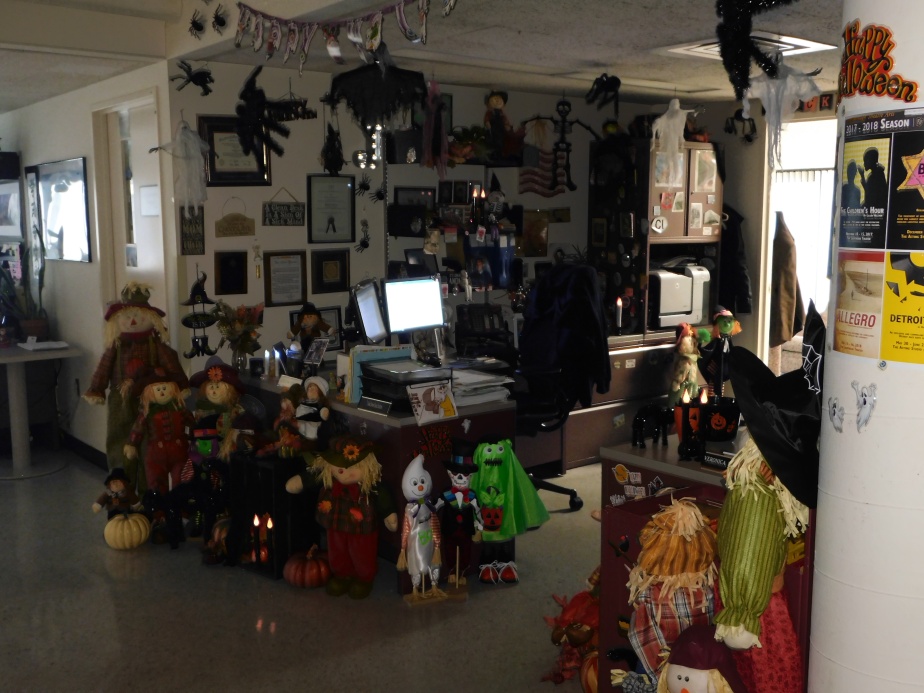
Judy wanted to let everyone know that:
“This was done by me and not the department. All has been paid for by me. I do it because I love Kingsborough.”
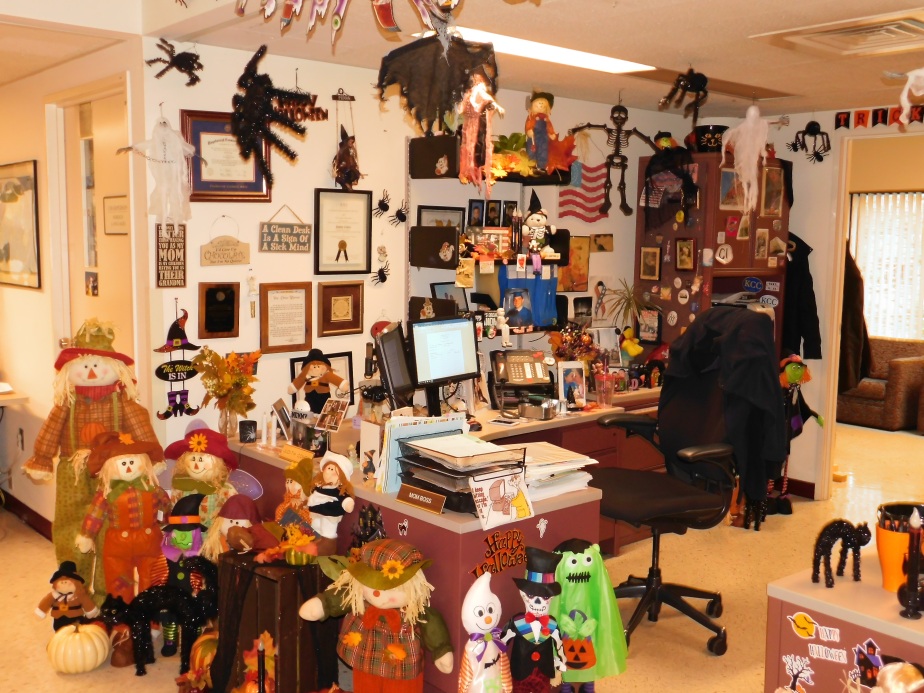
Thank you Judy for bringing a little bit of joy and surprise to each of us who get to visit the Office of Communications and Performing Arts- you make Kingsborough all the more special and delightful place to work and study.
The Halloween decorations will be in place until Thanksgiving when they come down and Judy begins putting up the even more spectacular winter holiday decorations for the office-a must see.
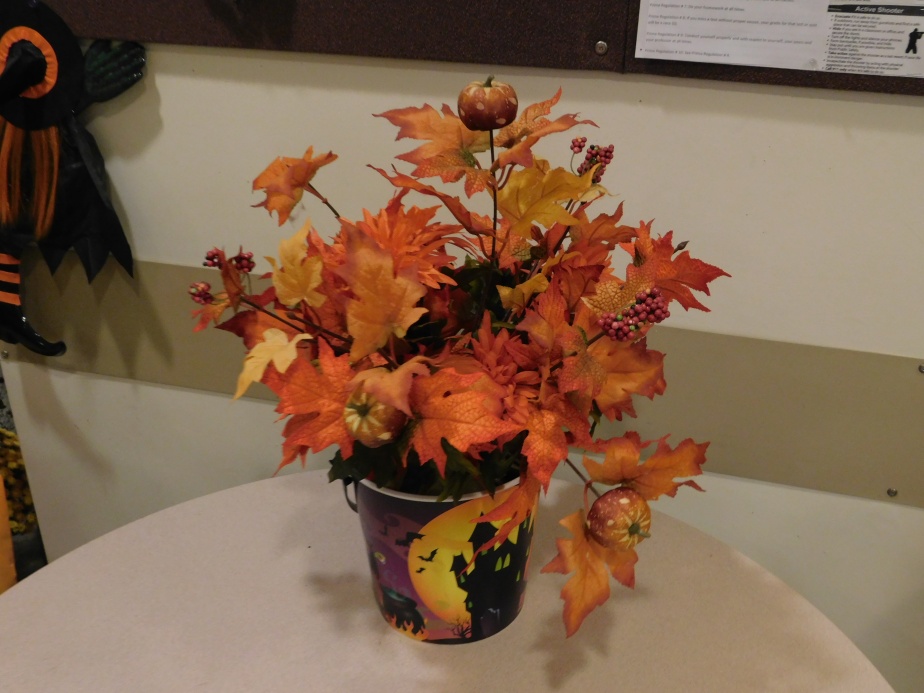
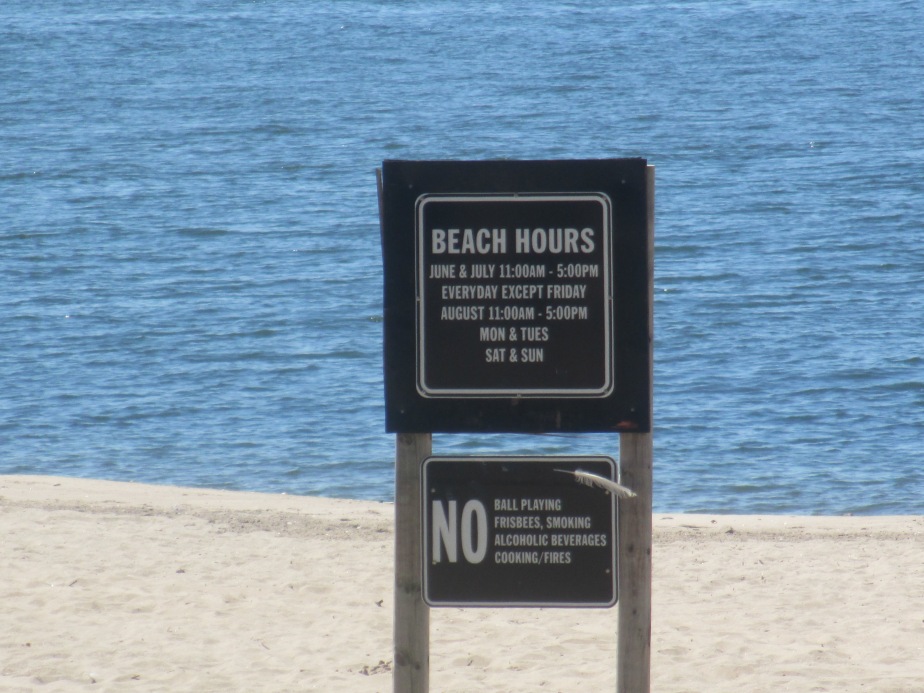
The Kingsborough Beach-Brooklyn NY August 2016
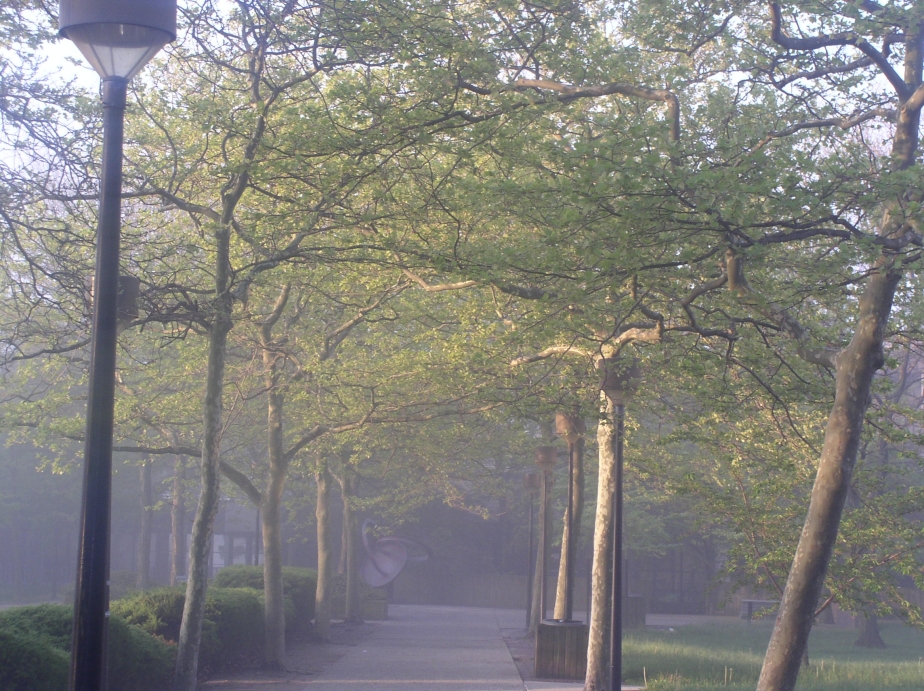
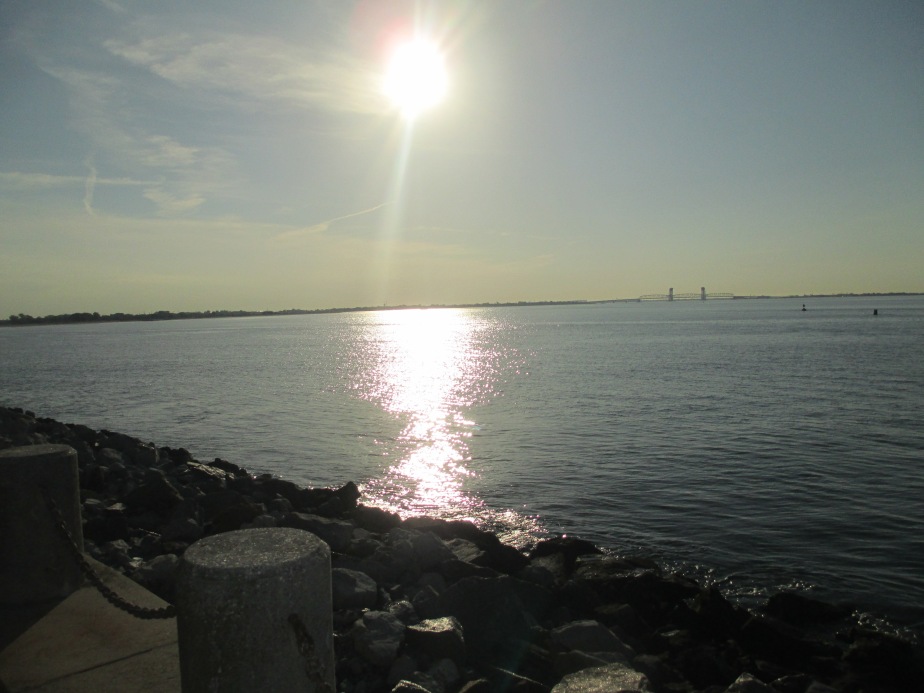
![13226724_10154190371709841_5152865560033426461_n[1]](https://kingsboroughblog.files.wordpress.com/2016/05/13226724_10154190371709841_5152865560033426461_n1.jpg?w=924)
As you drive onto the campus of Kingsborough you cannot miss it- it’s the large orange object 37 feet tall, reaching for the sky.
The object is made from Cor-Ten Steel and stand prominently at the center of the circle at the front of the campus. The object is called “Ascendence” and was created by the famed Japanese Artist Osamu Shimoda (1924 – 2000).
The work was created as an inspiration for Kingsborough students from all over the world to Ascend -to rise up, and to succeed.
http://virtualglobetrotting.com/map/ascendance-by-osamu-shimoda/view/bing/
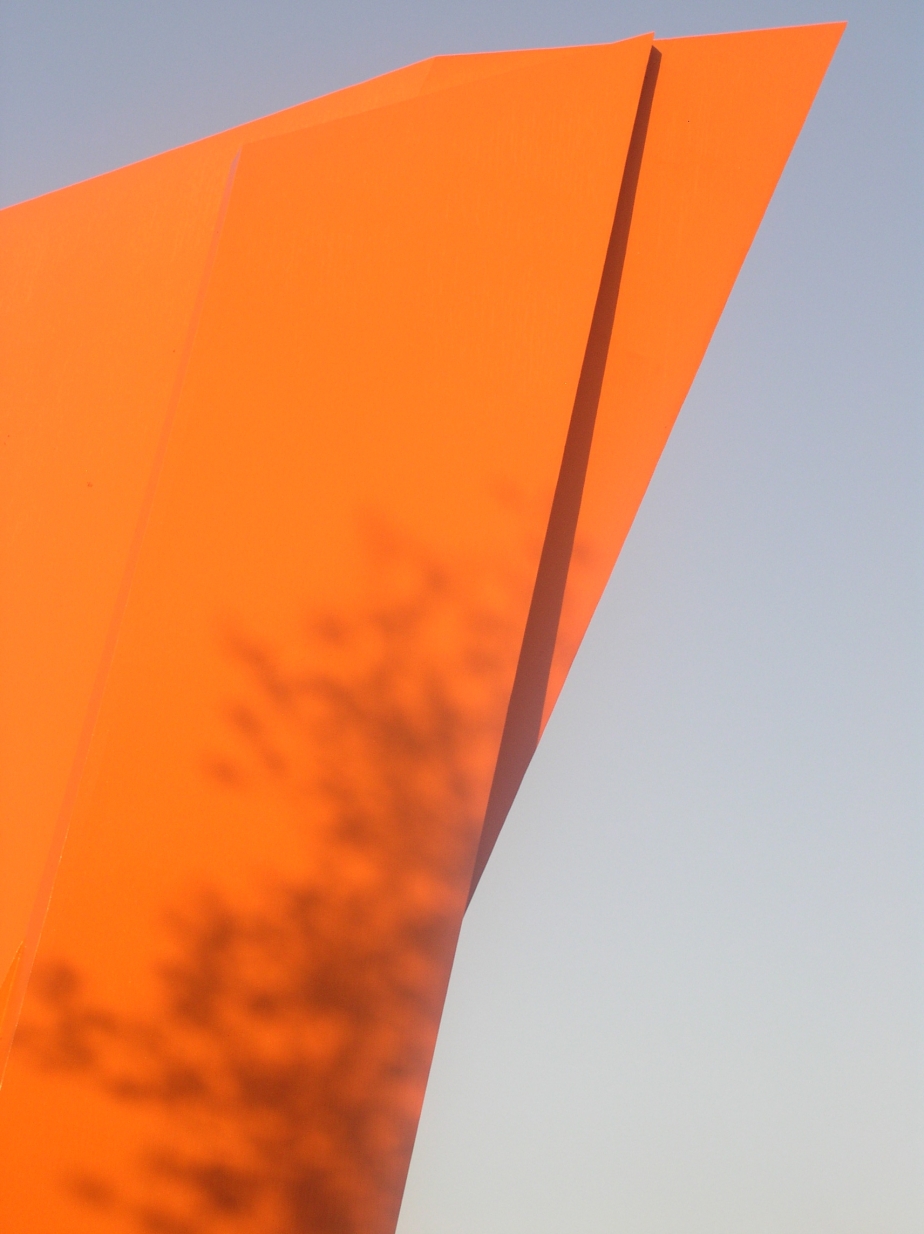
“MONUMENTAL IRON SCULPTOR”, Osamu Shimoda.
Osamu Shimoda used to call himself a “MONUMENTAL IRON SCULPTOR” Many might, remember that Shimoda was once was a well known and respected semi-abstract painter exhibiting his art works in Japan at the Nitten artists group shows in early 1950s. In 1959 he came to New York and under the strong influence of The New York School movement, abandoned his academic painting style, and started to create relief works of shaped canvas, and then he changed his works gradually to three dimensional sculpture.
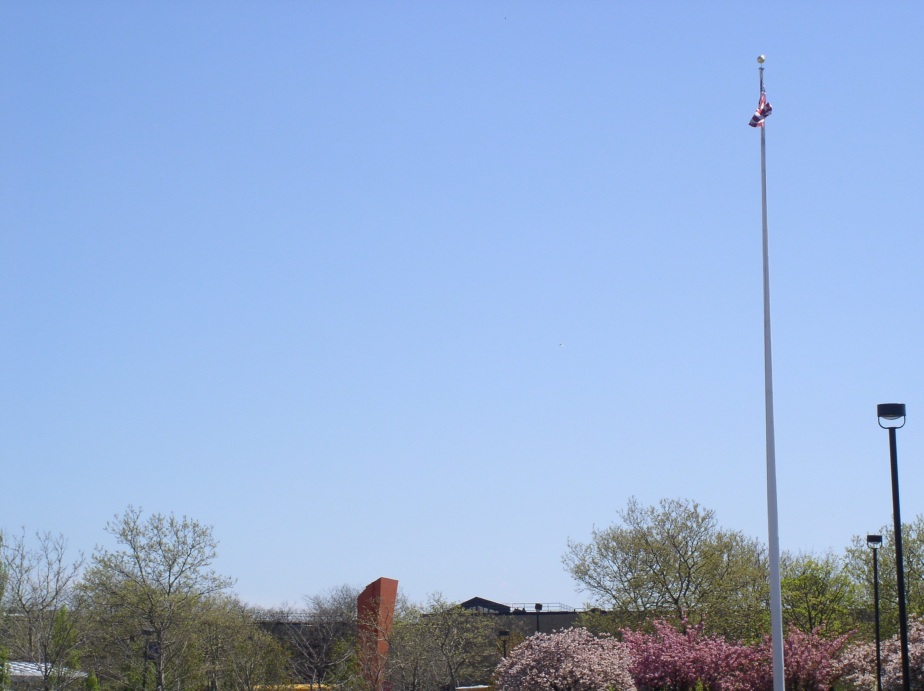
That was a golden age of Pop and Minimal art in New York of early 1960s. Andy Warhol’s famous works like “Green Coca-Cola Bottles” or ” Marilyn Monroe” caused a sensational stir in the Contemporary Art World. The enumeration of the machine-produced identical objects represents the mass production of the commercialism, denying a human touch has been cheered and accepted at large (by public). On the other hand, Donald Judd who is a pioneer of Minimal Art, utilized new man-made materials such as plastic, plywood and etc., which were developed during the Vietnam War, he created a new art form different from the traditional wood, stone carving or bronze sculptures byy constructing simple forms or objects using small pieces of form of materials.

Thus, constructive sculptures are far from the traditional ones which are executed by curving materials by chisels and knives scraping off the materials into smaller size. On the contrary, constructive sculpture has a potential power to stretch into the space without any physical restrictions. As the works bigger in scale, the smaller the galleries and they moved out seeking for a bigger open space such as parks, public places in suburbs. Numerous monumental sculptures by prominent artists like Isamu Noguchi, David Smith and Alexander Calder started to display their monumental works in civic plazas, parks and entrances of buildings, and finally Monumental Sculpture Art in America reached a golden Age.
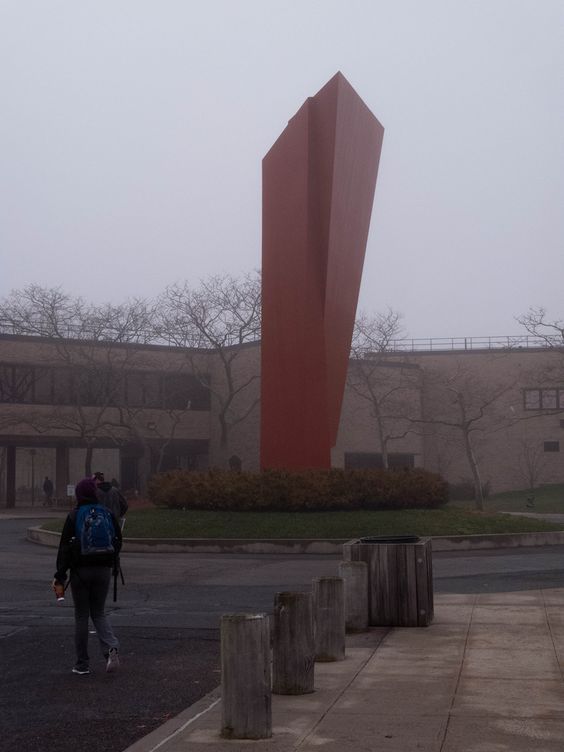
In 1972, Shimoda moved his studio into downtown of old Brooklyn. That old ruined building that had been used as an auto salvaging factory, where he found a pile of rusty iron sheets leaning against the wall or stuck on the floor. They had been abandoned for many years but it was still beautiful and exuded unchanged power of iron in Shimoda’s eyes. The iron, in general is an inorganic and insensitive material with heavy, hard and cold images as well as destructive, inflexible: because of its powerful sense of existence. Thus, a very few artists had recognized the aesthetic beauty within iron and use it as his or her aesthetic subject or even medium. Would it not be a possibility to execute a monumental iron sculpture by subtracting or minimizing those negative elements from the iron by attempting to lessen the gravity of the iron through the study on the layout or construction of the work?
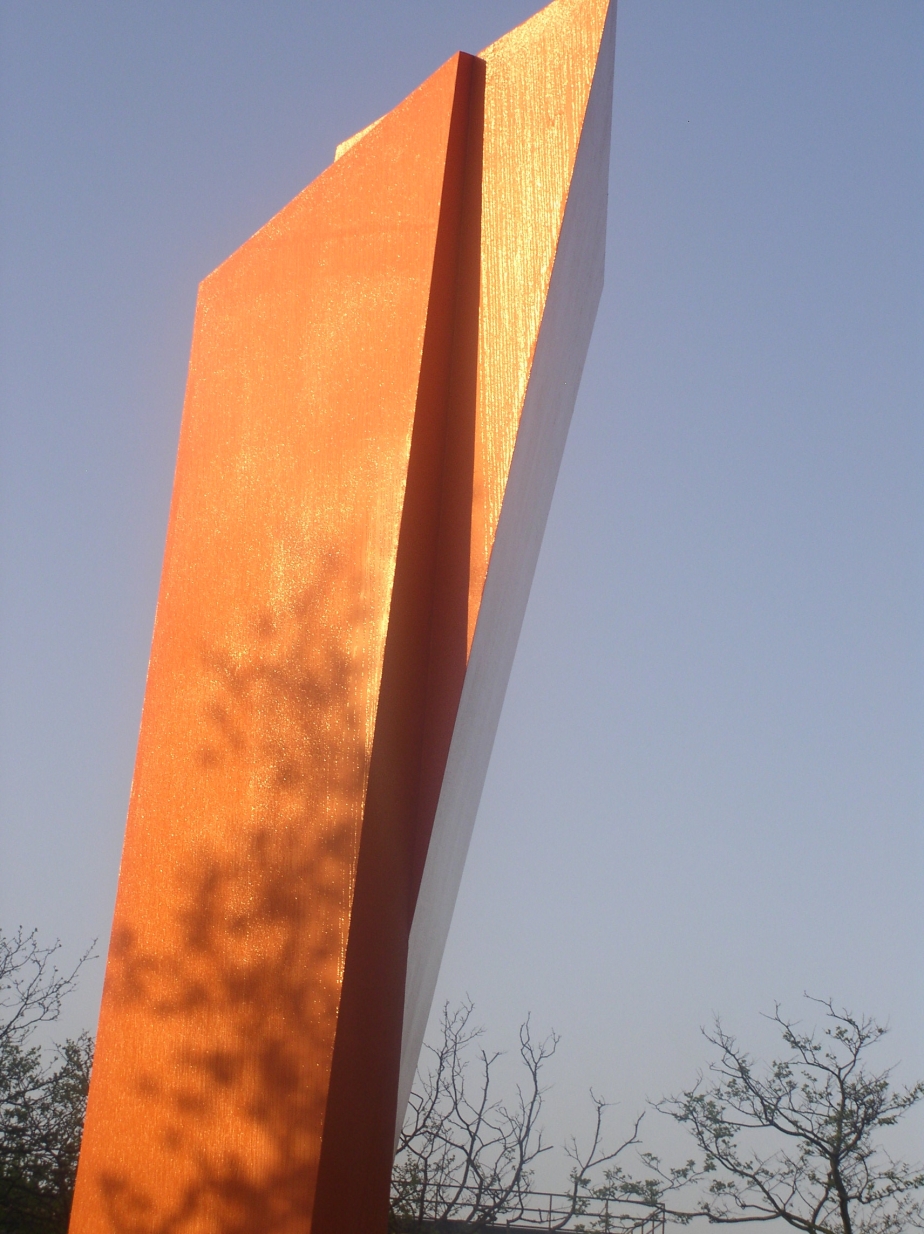
Barbara Rose, an American born modern art critic, who once commented on Shimoda’s works said that “intensive power and balance will be a distinctive feature of his works just like samurai spirits in Shimoda’s blood.” In his later years, he used to say that the iron talked to him and its power inspired his creativity. Osamu Shimoda was an artist who was thoroughly fascinated with a beauty of iron.
Today his work at Kingsboorugh stands as a testament to the Immigrant soul and spirit in the USA ascending higher and higher.
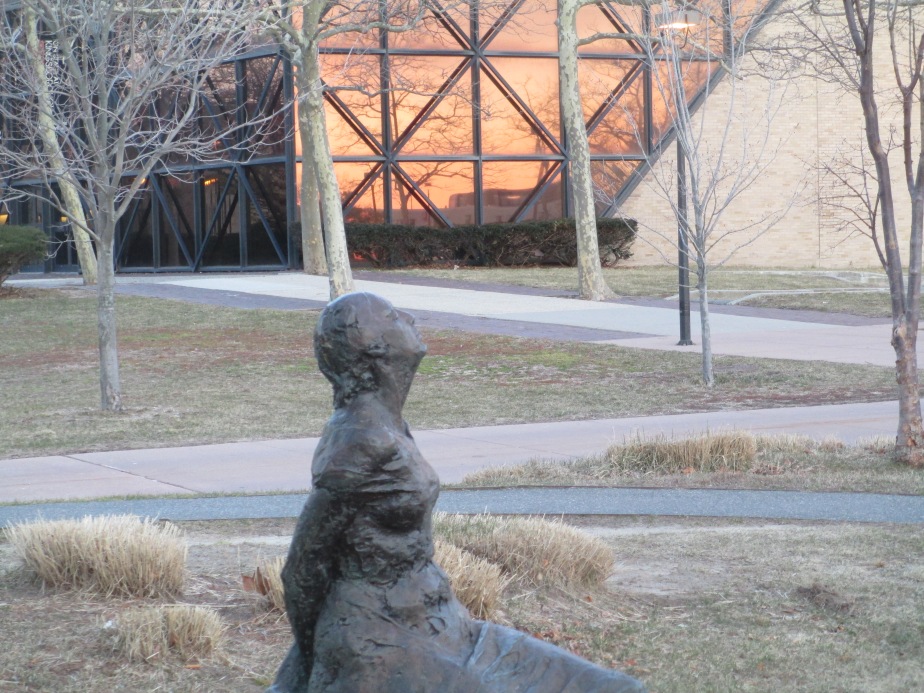
One of my favorite at works at Kingsborough Community College is the life-sized bronze figure by Leonda F. Finke, Woman in the Sun Seated -1988 placed in front of the Robert Kibbee Library. Finke who is in her 90s still works on Long Island and still makes castings of her works. A true master of the medium and recognized by professionals around the world, she has one of her works—a bronze portrait of painter Georgia O’Keefe, in the permanent collection at the Smithsonian. At Kingsborough, her sculpture has a real human and natural grounding that has always drawn me to it; what is it about bronze that makes it so much more serious?
Maybe it’s just me, but Finke’s work belongs somewhere permanent. The figures invite being found almost accidentally, where we can then observe them, and in doing so become more aware of our rough skins, our uncertainties, but also our own internal solidity.
One day while strolling through Seward Johnson’s Grounds for Sculpture (a magnificent place to visit), I came across another Woman in the Sun Seated -1988 by Finke, this was the same sculpture although the setting and location made it entirely new and different for me as the viewer.
As I have found out there are quite a few castings of this sculpture throughout the country, each in its own special and very different setting. It is considered one of her best (and yes –most expensive) works.
I love the fact that I could be in New Jersey or North Carolina, or perhaps in Massachusetts or Westchester, or even in Ossining , New York and see my Woman in the Sun Seated. Each time the very same and yet still very different.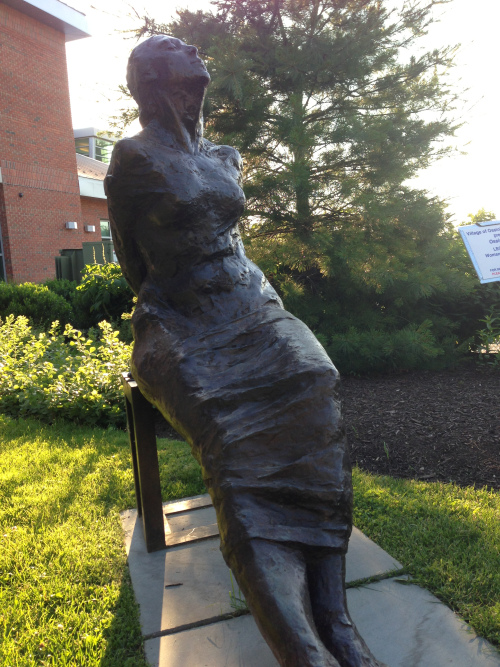
Originally from New York City, Finke resides on Long Island. Exhibitions of her work have been held in states along the East Coast and in England, Finland, Germany, and Italy. She is represented in collections at Kingsborough, The Butler Institute of American Art, Ohio; Brookgreen Gardens, South Carolina; the National Academy of Design, New York; New Jersey’s Newark Museum; the National Portrait Gallery and National Museum of American Art in Washington, D.C.; and other major museums, as well as private collections in this country, Japan and Europe. Besides her figurative works, Finke is also recognized internationally for her design and casting of medals, which she has been making since 1986.
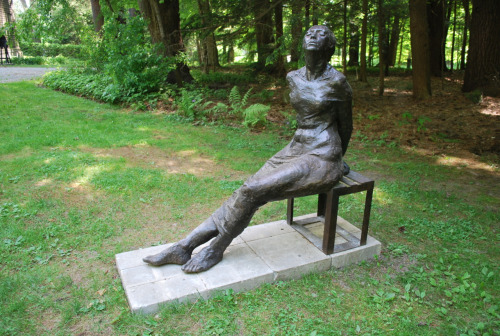
Leonda Finke’s sculpture has been primarily concerned with the human figure. “There I find constantly changing forms [and] a wealth of formal vocabulary [that] is a vehicle for expressing the basic emotions that shape our lives.”
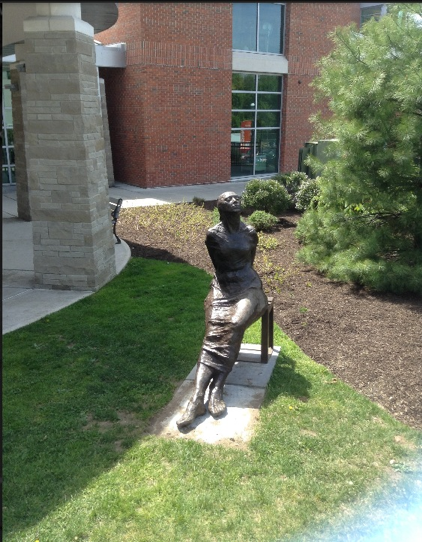
Winning her first national prize from the National Association of Women Artists in 1965, she has consistently been recognized for excellence in her work. In 1989 she was awarded the National Sculpture Society’s Gold Medal, in 1990 she received the Alex Ettl Cash Award from the National Academy of Design, and in 1991, 1992, and 1993 she again won prizes and awards from the National Sculpture Society. In 1994 she became an elected Academician of the National Academy of Design. 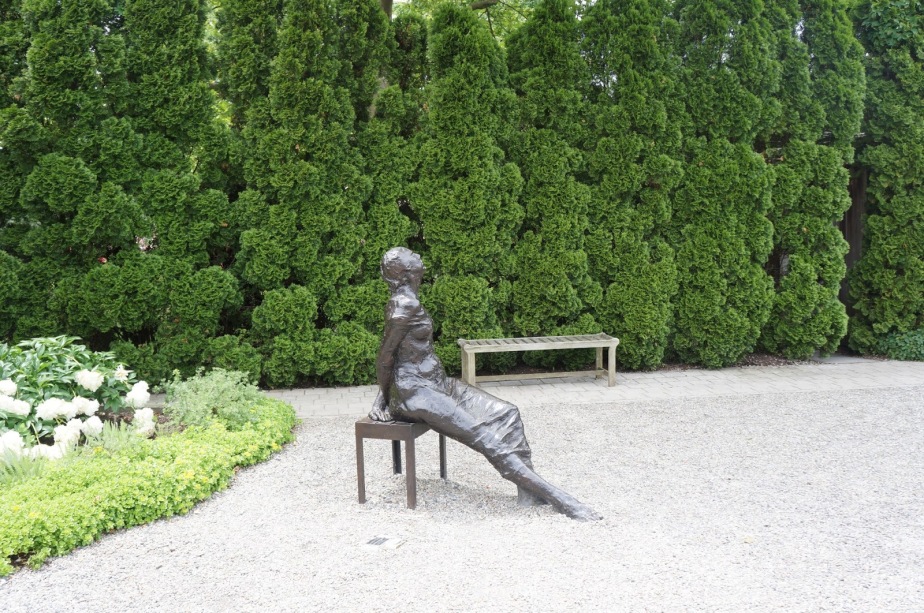
She has had many solo and group exhibitions, including: Cast Iron Gallery, New York; Newark Museum, New Jersey; the National Academy of Design, New York; the American Numismatic Museum, New York; the Brooklyn Museum of Art, New York; the Norfolk Museum, Virginia; and The Dallas Museum, Texas. Her 6 foot bronze works have been featured in the Contemporary Sculpture Exhibition at Chesterwood, the national historic museum and grounds of the American sculptor, Daniel Chester French, in Stockbridge, Massachusetts.
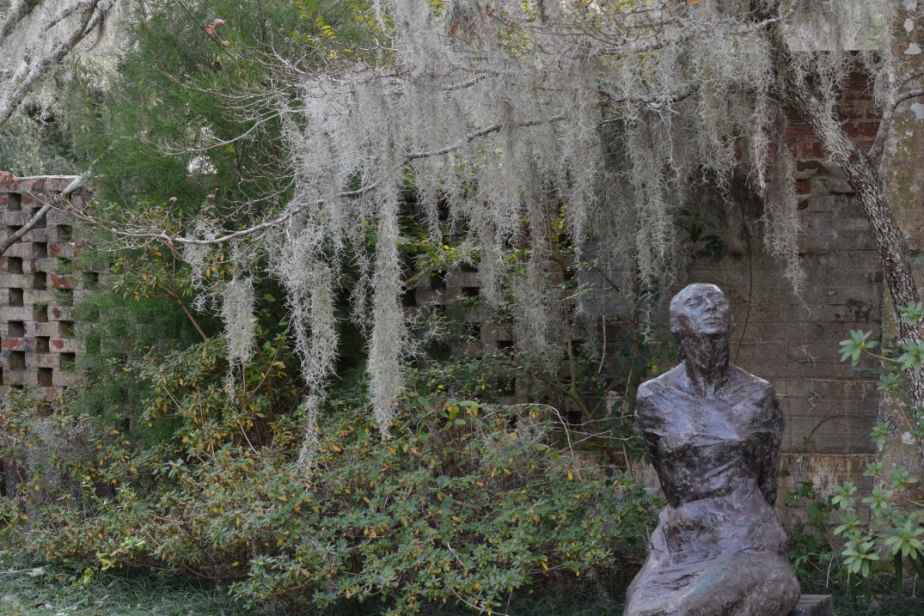
Leonda Finke’s work in bronze medals has won recognition from the prestigious Federation Internationale de la Medaille. She was invited to show her work at their Medal Exhibition in Helsinki, Finland in 1990. In 1992, she was both an invited lecturer at the British Museum and had her medal, “Virginia Woolf: A Room of One’s Own” featured on the cover of the British Art Medal society’s British Museum Exhibition Catalogue.
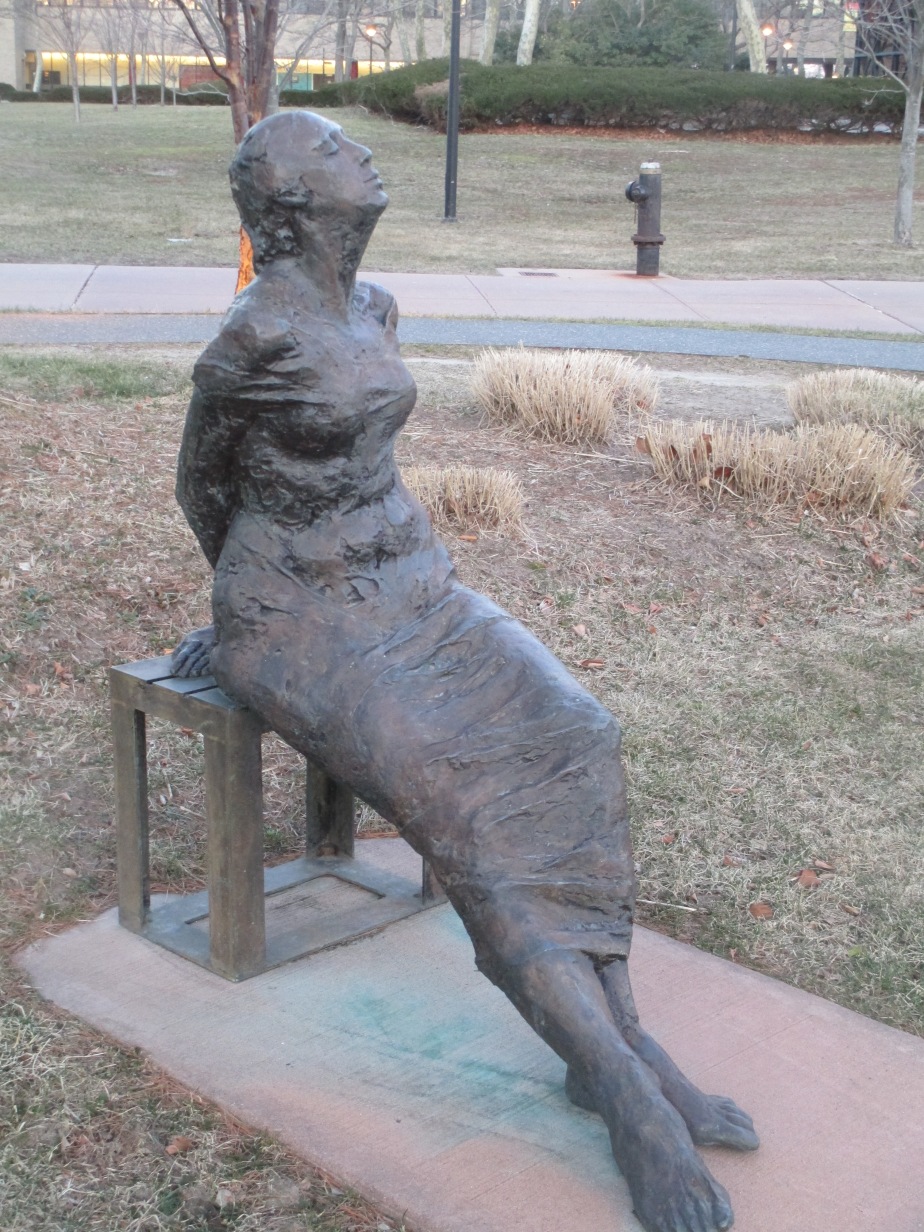
Her bronze portrait of Georgia O’Keeffe is in the permanent collection of the Smithsonian Museum’s National Portrait Gallery in Washington, DC. Her medals are in the collection of the British Museum, the National Museum of American History (Smithsonian), the Chrysler Museum in Norfolk, Virginia, and in many private collections throughout the United States and Europe.
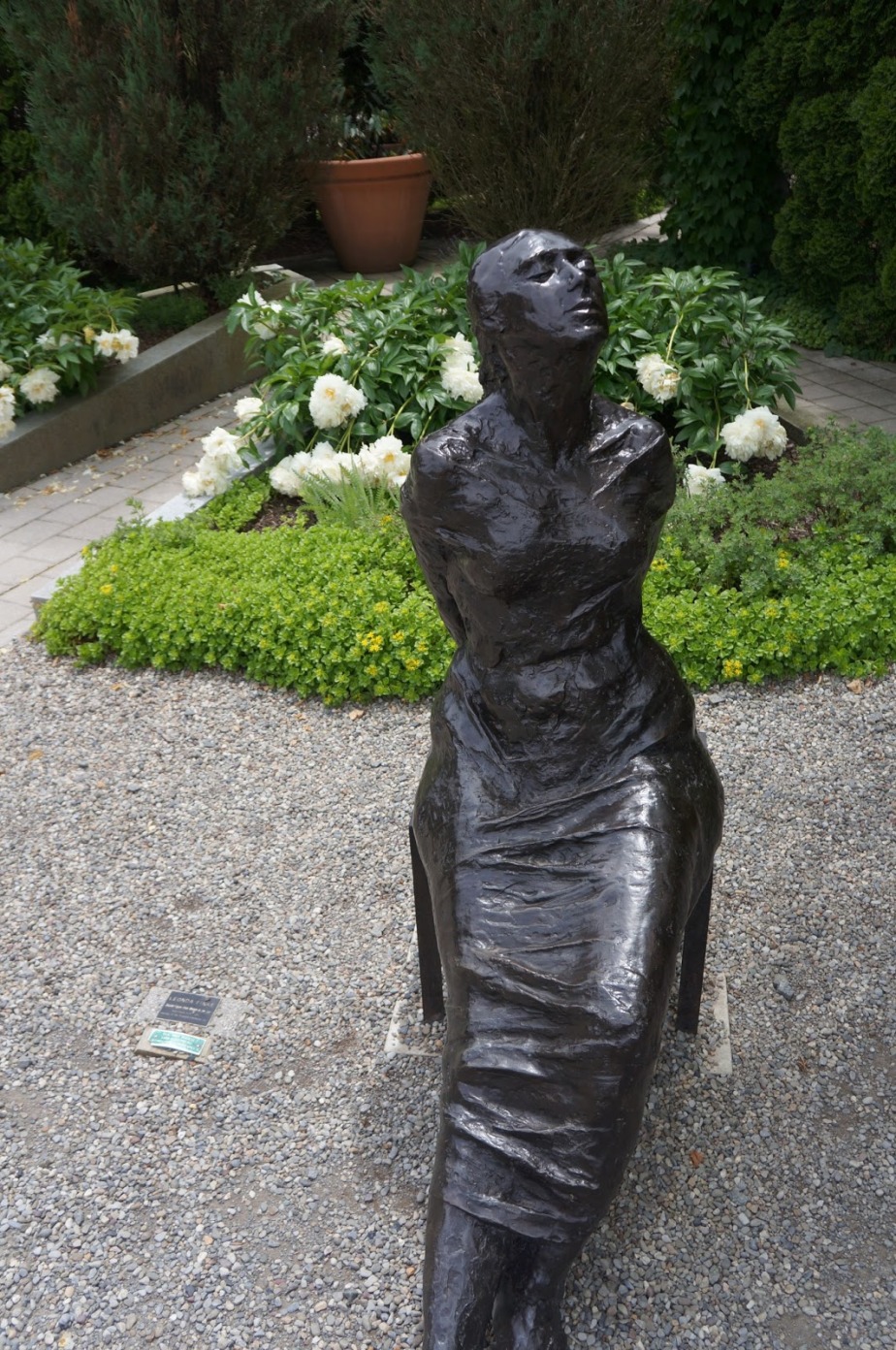
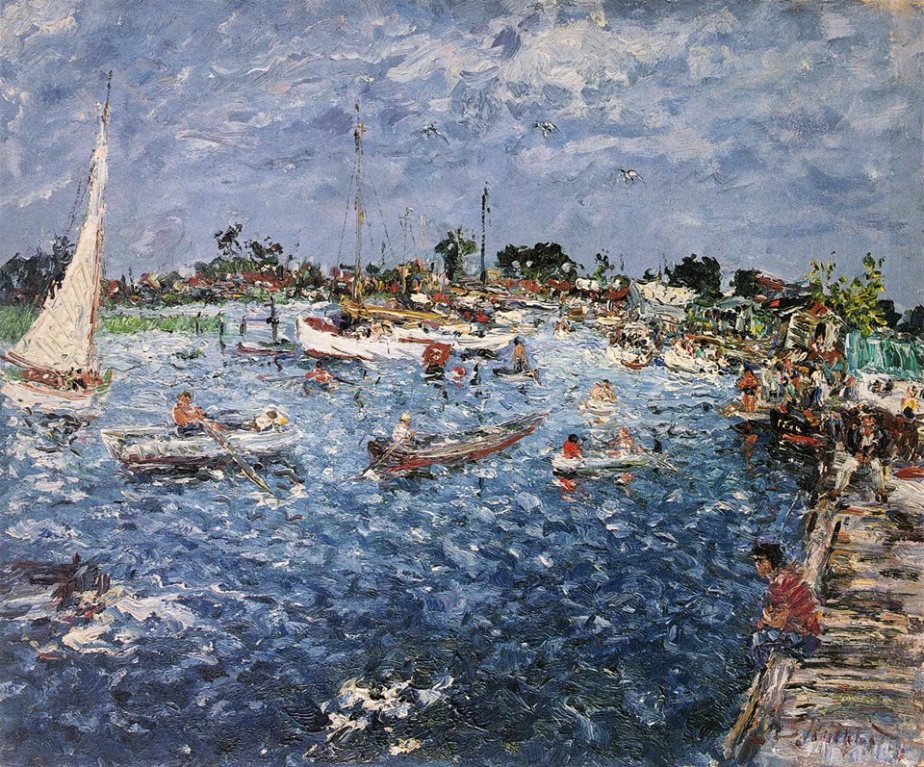
Samuel Rothbort began sculpting at an early age, making animals from bread dough in his mother’s kitchen. As a young man, he worked in a glassware store while also painting fifty-cent charcoal portraits and training to be a leather worker. He immigrated to New York in 1904 and took a variety of unskilled jobs, including night watchman on a construction site. The master builder on the site noticed Rothbort drawing on unfinished plaster and decided he was too talented to be a watchman. As a result, Rothbort became a decorator, creating designs in paint and plaster for the homes of wealthy Manhattanites. For most of his life he ran a farm on Long Island with his wife, Rose, and created many paintings, sculptures, and mosaics that captured, as he described, “a little bit of truth from nature.”

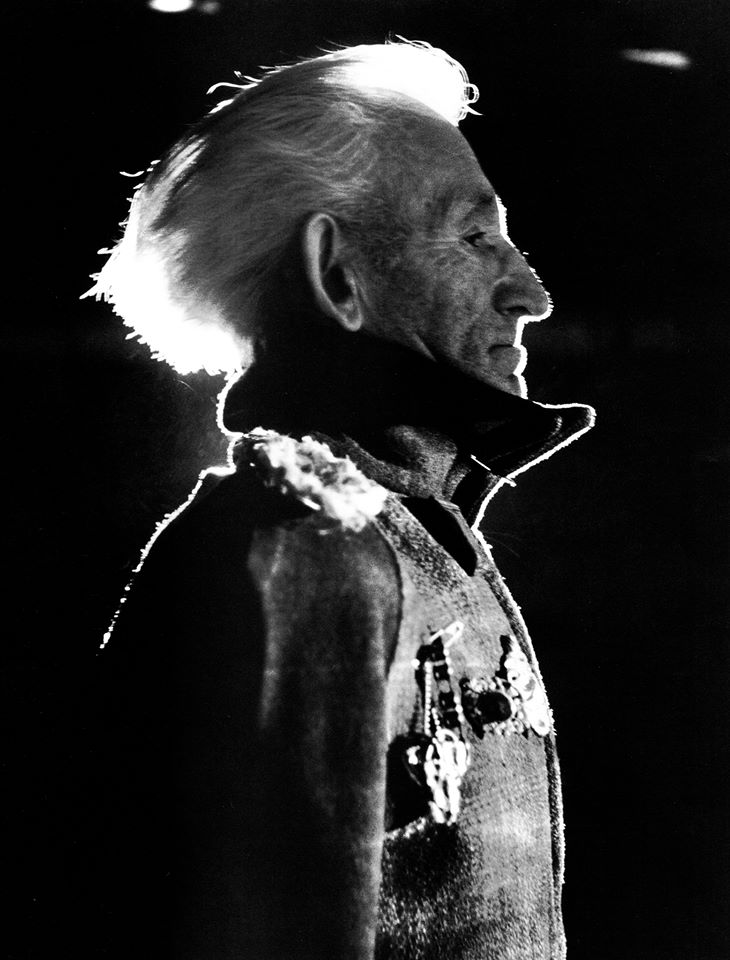
Samuel Rothbort began making art as a child in a Russian sector of Poland and immigrated to the United States in 1904, at 22. In New York, the self-taught artist found employment as a decorative painter for churches and wealthy homeowners; he also made his own colorful, Ashcan-style paintings.
He exhibited regularly in New York from the teens until his death in 1971. In the 30’s, while operating a chicken farm in Rosedale on Long Island, Rothbort started carving found pieces of stone and wood, joining the so-called ”direct carving” movement whose more famous practitioners were John Flannagan, Robert Laurent, Chaim Gross and William Zorach. The 30 examples on view at Hollis Taggart, in a show titled ”Direct Carver,” have a rough immediacy and quirky romance.
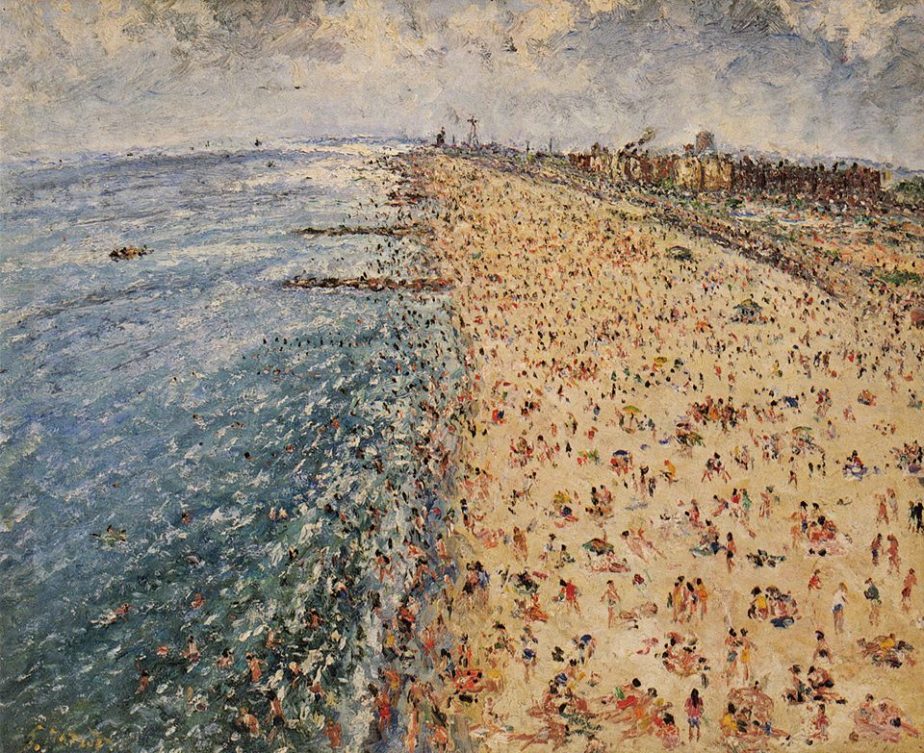
Mothers and children, self-portraits, animals and doll-size figures are the subjects, but the main interest is in the tension between the image and the raw material. Some, like a white marble dove, approach Brancusian simplicity while modified tree branches verge on Surrealism. Others, like the lumpy stone ”Cat and Kittens,” suggest the work of a backwoods folk sculptor.
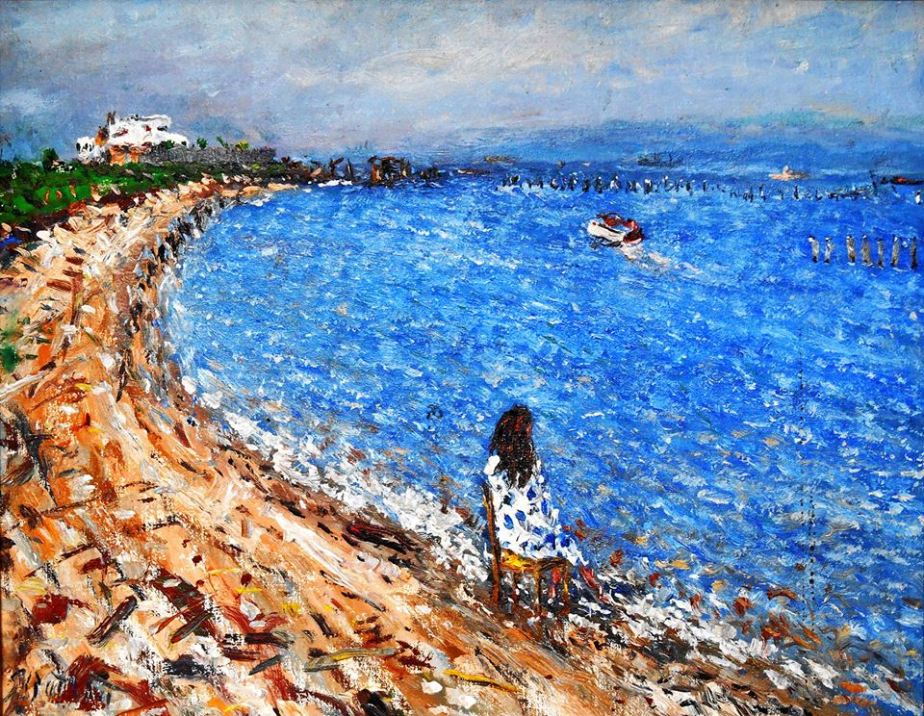
Late in life, Rothbort produced a large quantity of mystical, semi-abstract watercolors, a selection of which are at Luise Ross in an exhibition titled ”Twilight Fantasies.” Working spontaneously with pen and brush, he created densely worked compositions of blotchy color and fields of swirly, engraving-like lines out of which emerge landscapes, seascapes and fantastic narratives. They have an incandescent, almost combustive visionary energy.

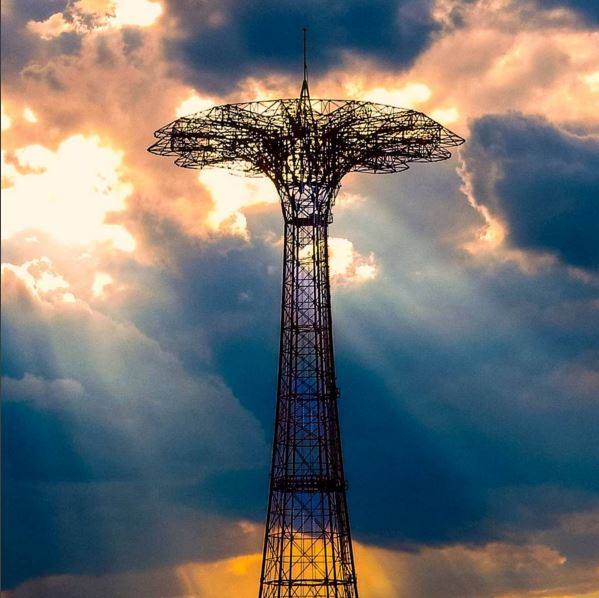
Originally built for the 1939 Worlds Fair in Queens- the “Parachute Jump” was originally sponsored by Lifesavers and painted the colors of the Lifesaver Package. Rides when it was first brought to Brooklyn’s Coney Island cost just 45 cents for adults, and 25 cents for children. It stopped business for good in the early 1960’s-but today has been reborn as an electric nightshow with LED lights illuminating southern Brooklyn and KCC.